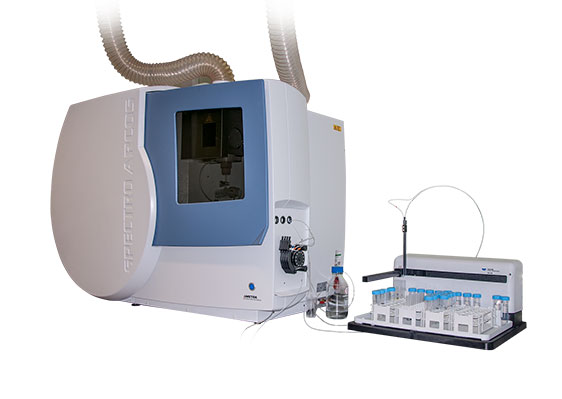
| OELCHECK test instrument: | Spectro Arcos SOP |
| Sample quantity: | 10 ml |
| Unit: | mg/kg (1.000 mg/kg = 1.000 ppm = 0,1 weight %) |
| Test result: | Water quality: Ca, Mg, water hardness Contamination: Ag, Al, Cr, Cu, Fe, Li, Mn, Ni, Pb, Sn, Ti, V, Zn Additives: B, K, Mo, Na, P, Si |
| Result range: | 0 - 10.000 ppm |
| Analysis for: | All cooling waters, coolants and concentrates Highly contaminated coolants are filtered prior to analysis (0,45 µm). |
| Brief description: | The samples are diluted by the sample changer with a peristaltic pump and an internal standard is added. In the nebuliser, they are then atomized with an argon flow. The aerosol then passes into a spray chamber, in which large drops are separated. The thus prepared aerosol now enters the plasma, a mixture of atoms, ions, and electrons. The temperature is about 10,000 °C. This extremely hot plasma evaporates the sample matrix and provides the energy to stimulate the individual atoms. The emitted radiation, which has a characteristic wavelength for each individual element, is spread out spectrally and detected with a CCD chip. A complete emission spectrum can be recorded simultaneously. Variations in the aerosol composition caused by varying mixing ratios of the investigated coolants are corrected by analysis of the internal standard. |
| Statement: | With the ICP method, more than 20 different elements can be determined in coolants, concentrates or coolant mixtures. These elements are important data carriers. The content of elements allows conclusions to be drawn on e.g. corrosion of components, soldered connections or flux residues. The water hardness can be identified via the contents of Ca and Mg. Finally, the contents of additive elements permit an initial assessment of the inhibitor system, the aging stage and the mixing ratio. The comparison of filtered and unfiltered coolants makes it possible to distinguish between dissolved and particulate components. |
| Underlying test standard: | ASTM D6130 |